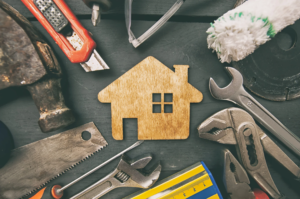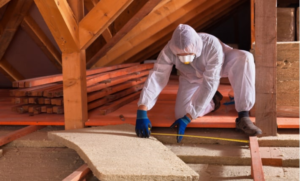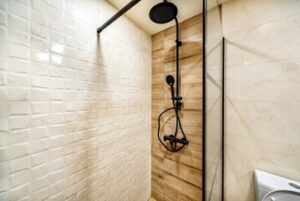Home repair is one of the most important tasks every homeowner must undertake. But it can also be one of the most expensive!
Thankfully, there are ways to make it more affordable. Check out these tips for saving on your next home maintenance project! Contact Professional Home Repair now!

Home repairs are associated with many costs, some of which can be very expensive. Repairing a roof, replacing a furnace, or dealing with septic problems can cost thousands of dollars. However, homeowners can help prepare for these repairs by budgeting and saving money each year. They can also use a home equity line of credit to tap into their equity when needed, typically less expensive than a personal loan or credit card.
Some experts recommend that homeowners set aside 1% of their home’s value each year for maintenance and repair expenses. Those who prefer to hire contractors should budget even more, since they are likely to spend more than do-it-yourselfers.
The most common and costly home repairs are repairing foundations, roof replacement and dealing with water damage. Homeowners should take steps to keep these issues from becoming major repairs by scheduling regular inspections and taking preventive measures.
Another option is to consider a home warranty, which can cover some or all of the cost of fixing certain appliances and systems in a home. However, it is important to understand that the coverage will be limited and not extend to the entire home. Lastly, homeowners should always weigh the costs of using a home warranty against the cost of delaying the needed repair or renovation.
Other factors that influence the costs of home repairs include the severity of the issue, location, the type and skill of contractor hired, and current pricing for materials. To get an idea of what the typical cost is for various home repair projects, homeowners can visit websites that connect them with contractors and ask for estimates. These websites usually include a breakdown of all the costs for the project, including labor, parts and materials, as well as any fees for municipal permits or inspections.
Some states also have programs to help residents with the cost of essential home repairs and improvements. For example, the Tennessee Home Repair Loan Program, or TRLP, provides loans to help low-income homeowners repair and renovate their homes. The program covers the cost of items such as roofing, furnaces and water heaters; plumbing repairs other than replacing a fixture; electrical wiring; and conditions that pose health or safety risks, such as deteriorating foundations, roofs, sidewalk violations and lead paint.
Government Programs
In some cases, home repair costs can be partially or completely covered by government programs. Grants, or financial aid that doesn’t need to be repaid, are often available through local and state governments, as well as community organizations. These funds are usually given away to people who need them most and can be a great way to pay for some major home improvement work.
The most common types of home repairs covered by grants are those that prevent health and safety hazards in the house. Typically, these grants cover roof repair, foundation repairs and the replacement of windows and outer doors. They may also be used to recondition or replace plumbing and electric systems in older homes. Improvements for handicap accessibility are often covered by these grants as well, including the building of wheelchair ramps and widening of doorways to allow wheelchair access.
City and county governments are the most likely sources of funding for these programs. You can find out more by contacting your local government housing department or searching online for programs in your area. The federal Department of Housing and Urban Development also offers grants to help people make improvements to their homes.
Many of these programs are geared towards helping low and middle-income residents. To qualify for these grants, you will need to meet certain criteria based on your age and income level. For example, the Senior Rehabilitation Program (SRP) provides grants to homeowners over the age of 62 to help them eliminate conditions that threaten their safety or health.
The SRP can provide funds for a variety of projects, such as re-pointing brick stoops, installing vinyl siding, repairing leaking roofs, and more. Other programs can also assist with connecting homes to public water and sewer systems, as well as digging wells or septic tanks. Other grants help with energy efficiency upgrades, including insulation, air sealing and heating and cooling system repairs. Still, other grants are intended to address specific health and safety issues in the home, such as those that focus on lead paint removal. These programs are usually administered by local Area Agencies on the Aging offices or by other community organizations.
Getting an Estimate
Home repair and renovations can be costly, especially in light of labor shortages and increased prices for basic building materials. Getting the best estimate possible for any work you need to have done can save you money in the long run. It’s also a good idea to shop around for the best rates and compare contractors’ skills, licensing, and pricing before you hire anyone to work on your home.
Free estimates are common in the home repair industry, but they are not always accurate. These quotes are based on the information that a professional can gather over the phone or in an in-person meeting and may be incomplete. A more formal final quote, which should include detailed breakdowns of labor and material costs, can be significantly higher or lower than a free estimate.
There are many online tools that can help you get a better feel for how much it will cost to complete a certain project. However, the most reliable way to figure out the cost of a particular job is to visit local home improvement stores and walk through the aisles, paying attention to what materials actually cost in the real world. Bringing a notebook is a great idea, so you can take notes and write down what it will likely cost to replace things like carpet, tile, paint, blinds, vanities, fixtures, or ceiling fans. You can also use a spreadsheet to keep track of the total costs for each project.
The old adage that you should get three estimates is true for any type of home repairs. It’s worth the time and expense to find out if a contractor is charging too little, too much, or for the wrong thing. In addition, it’s helpful to meet the contractor at your home and evaluate their work on site.
If you’re unable to afford the cost of a professional estimate, consider a personal loan or credit card. These loans are a convenient and flexible way to finance major repairs, as well as make small improvements and updates to your home. A reputable lender should be able to provide you with competitive interest rates, and some lenders offer payment terms that let you pay off your debt over time, which can reduce your overall monthly payments.
Doing It Yourself
Homeownership is more than weekends spent relaxing on the deck or intimate evenings in front of the fireplace; it requires a commitment to maintain your private oasis and make necessary repairs as they arise. While many people assume that all home repair is highly technical and beyond their skill set, it’s surprising how a few basic skills and the right tools can save you from having to call a contractor or handyman.
Purchasing a home is an expensive endeavor; it takes years to earn the down payment, and then there’s the monthly mortgage payments, property taxes and insurance. But that’s not the end of the costs associated with owning a house; if you don’t keep up with maintenance and repairs, you could incur additional expenses for major issues like flooding or structural damage.
Some home repair jobs are difficult due to their physical difficulty or high skill floor. For example, repairing a roof requires significant strength and stamina to carry out, while child-proofing a house can be very detail oriented. Other home repair projects are challenging for a variety of reasons, from the cost of tools to the amount of time and stress that can be involved with learning new skills.
It’s important to remember that no one knows everything, and even skilled contractors have to learn about a variety of tools and techniques over the course of their careers. It’s a good idea to research a home repair project before you begin, and never underestimate the complexity of the task.
Rolling up your sleeves and tackling a DIY project can be very rewarding, but it’s important to know your limits. Many home improvement tasks have the potential to cause injury or death if carried out improperly, and even a seemingly simple repair job like caulking can lead to unforeseen problems later on if done incorrectly.
If you’re a first-time homeowner, or even an experienced DIYer, this guide is perfect for you. It offers step-by-step instructions, helpful pictures and tips to help you complete your project safely. It also discusses the necessary tools and supplies for each project, as well as safety procedures to follow. It’s a great resource for anyone looking to make improvements or repairs to their home, and it even includes considerations for renters who aren’t interested in hiring a professional contractor.








